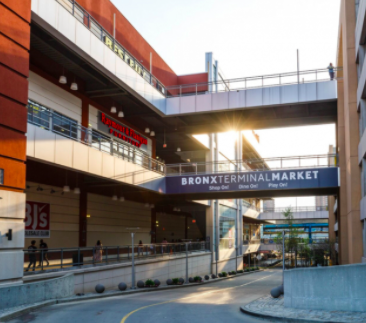A proposal to ramp up the amount of renewable energy the city uses as a proportion of its overall energy consumption, is raising concerns over potential health risks the project may pose for Mott Haven residents and businesses.
Mayor Bill de Blasio announced in April that New York City would partner with the New York State Energy Research and Development Authority (NYSERDA), to increase renewable sources such as wind and solar to the city, as part of the State’s Tier 4 Renewable Energy plan. The blueprint calls for running power from the Catskills southward to Queens.
Advocates strongly agree that clean energy is vital for the environment and would help the city’s economic recovery from the pandemic, through the creation of green jobs. But some worry that a proposal known as Clean Path NY, which calls for the creation of an AC to DC converter station under the former Bronx Terminal Market on Exterior Street, would put additional burdens on the neighborhood known as Asthma Alley.
The Clean Path NY proposal is one of seven submitted under NYSERDA’s Tier 4 project. But the power brokers behind the project —-Related Companies, which owns the Terminal Market, Invenerty and the New York Power Authority, which owns and operates peaker plants in Mott Haven and Port Morris–mean it is likely to be a strong contender.
A recent analysis by the Bronx Institute of Urban Systems anticipates that the Clean Path proposal would make the Grand Concourse the “principal north-south axis for the Related-NYPA high voltage AC lead line as it approaches the East River,” and that several nearby schools and Lincoln Hospital are likely to be impacted by their proximity to high-voltage AC power. The analysis references several studies from the UK and US that link proximity to HVAC transmission lines and childhood leukemia clusters.
Community advocates say they were left out of the conversation surrounding the proposal process, and that details of the proposal are vague, leaving them with questions about the proposed route.
“How are you going to have a project like this with no communication,” said Cesar Yoc, founder of the Bronx Institute for Urban Systems.
Yoc, who’s lived in Port Morris since immigrating from Guatemala in 1989, has seen the area become more densely populated in recent years as a result of new affordable housing.
“It’s like a slap in the face of our community,” said Yoc. “They just want to construct and provide more energy instead of actually talking about reducing energy.”
The Bronx Children’s Museum, which is located near the Bronx Terminal Market, expressed concern about proximity to the converter station, adding that no one informed or briefed about the proposal, especially given that “NYSERDA review process does not require standard community engagement protocols” with availability for public comments after the proposal is approved, according to a recent press release.
“It is for us a great irony that after nearly two decades of struggle to build and open our museum that today we are confronted with a great challenge that may place our many years of hard work and the well-being of our community at risk,” said the Bronx Children’s Museum in their press release.
The health concerns are even more worrisome since Mott Haven and Port Morris have among the city’s lowest vaccination rates. As of July 27, 43.9 percent of Port Morris and 50.9 percent of Mott Haven have been fully vaccinated compared to the Upper East Sides 78.6%, according to New York State data. Additionally, the Bronx saw the highest case rate of COVID-19 in the city at 10,587 per 100,000 people compared to Manhattan, which saw a case rate of 6,637 per 100,000, according to a recent economic report from State Comptroller Thomas DiNapoli.
Mychal Johnson, co-founder of the grassroots group South Bronx Unite, said the idea of more infrastructure in the area worries him, despite the advantages renewable energy would bring.
“We need to fight global warming, we need to fight climate change. You can’t do that by hurting a community.,” said Johnson. ” [The proposal] would be contributing to the cumulative effects of all those industries and all the issues that have caused our community to be one of the most unhealthy communities or counties in all of the state of New York.”
The electromagnetic fields from the transmission lines attract matter emitted from peaker plants and diesel exhausts, exacerbating respiratory issues, added Johnson. And with the surrounding highways, peaker plants, and air pollution from trucking fleets, childhood asthma rates are 40 percent higher than the city average. In addition, Johnson says that the proposal does not consider shutting down South Bronx waterfront peaker plants.
“We need [clean energy] but we don’t need it at the expense of the health of this community or any community,” said Johnson. “We can’t be in a rush to do it, to not do it right.”

